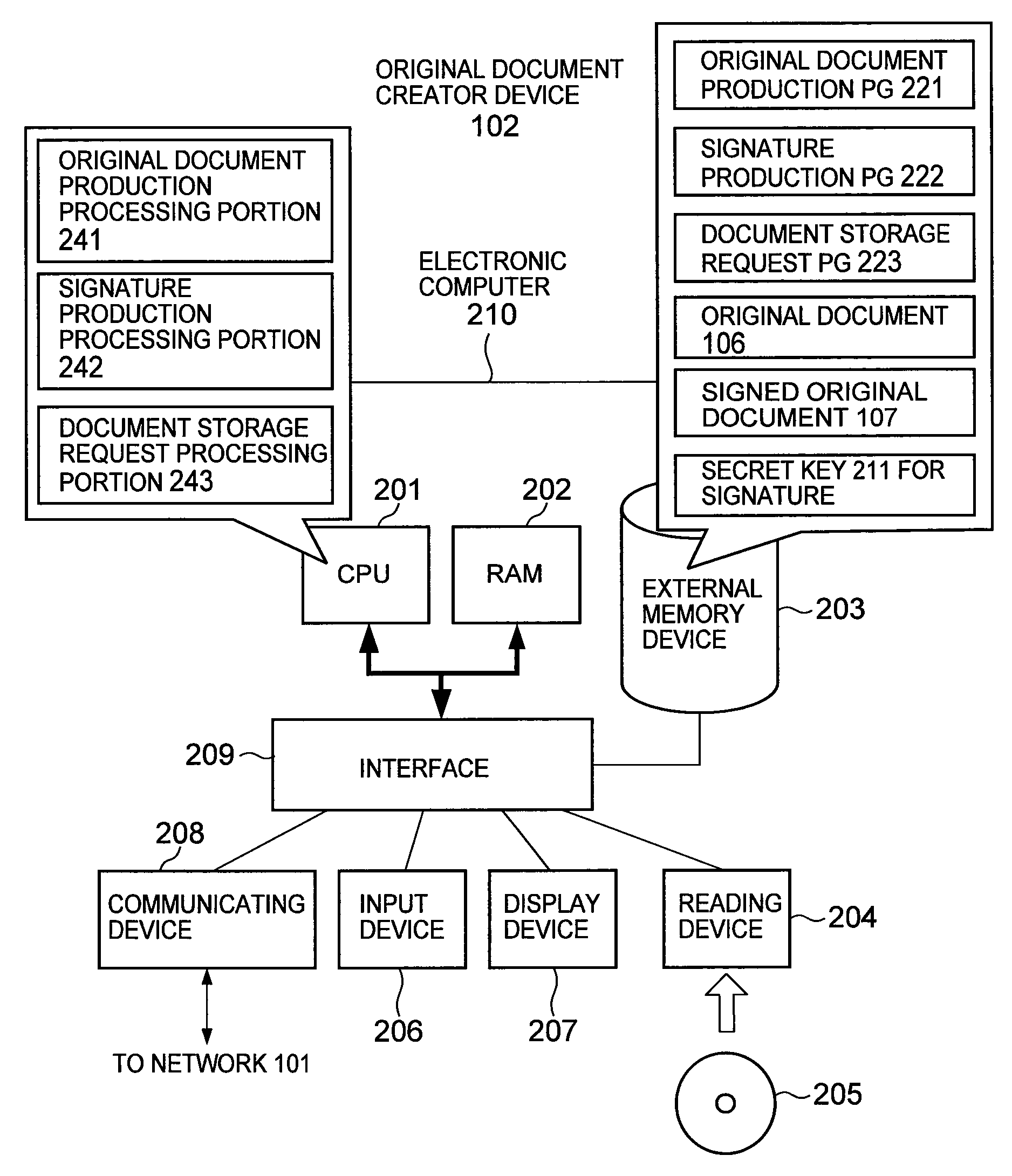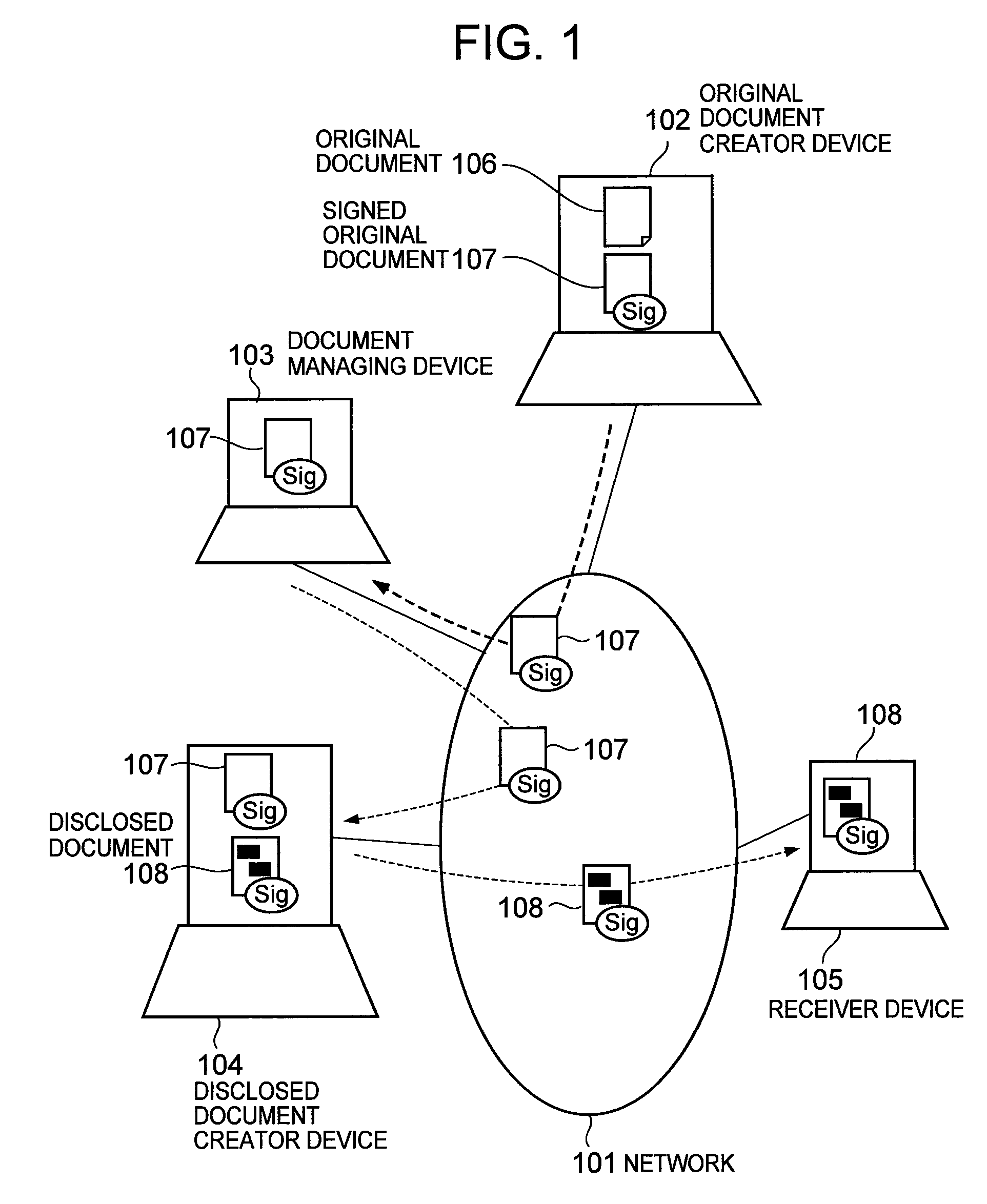Authenticity assurance system for spreadsheet data
- Summary
- Abstract
- Description
- Claims
- Application Information
AI Technical Summary
Benefits of technology
Problems solved by technology
Method used
Image
Examples
Embodiment Construction
[0039]The present invention will be described below referring to embodiments applied to an information disclosure system in an administrative agency, but the present invention may be also applied to information disclosure systems outside those of administrative agencies and to systems in general handling spreadsheet data outside of the information disclosure system. Also, the present invention may be applied to electronic documents other than spreadsheet data.
[0040]The spreadsheet data in this embodiment refers to data capable of displaying a region called a cell arranged in a lattice state on a display screen, in which data associated to each cell is configured so as to be capable of processing by the cell unit.
[0041]The spreadsheet software arranges the cells in a lattice state on the display screen, displays the data associated with the cells within the cell and carries out data processing by the cell unit.
[0042]The data stored in each cell of the spreadsheet data may contain any...
PUM
 Login to View More
Login to View More Abstract
Description
Claims
Application Information
 Login to View More
Login to View More - R&D
- Intellectual Property
- Life Sciences
- Materials
- Tech Scout
- Unparalleled Data Quality
- Higher Quality Content
- 60% Fewer Hallucinations
Browse by: Latest US Patents, China's latest patents, Technical Efficacy Thesaurus, Application Domain, Technology Topic, Popular Technical Reports.
© 2025 PatSnap. All rights reserved.Legal|Privacy policy|Modern Slavery Act Transparency Statement|Sitemap|About US| Contact US: help@patsnap.com



